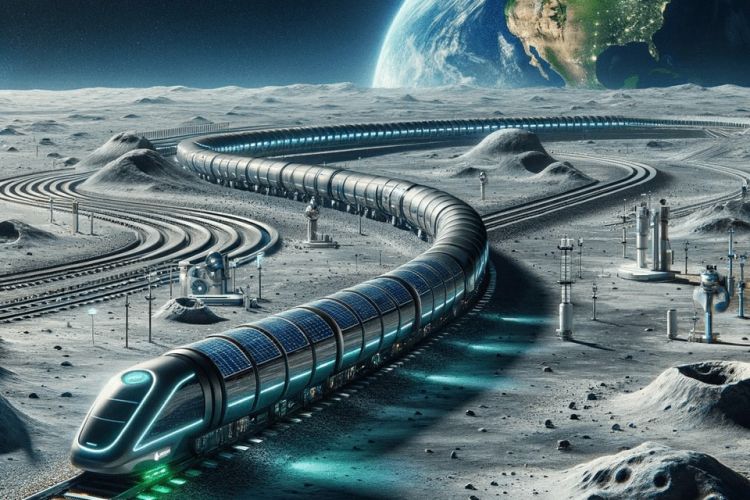You are not alone if the thought of constructing a railway on the moon seems like something out of a science fiction book.
However, NASA's Innovative Advanced Concepts program has awarded additional funds to six "science fiction-like concepts," including the moon train.
Levitating magnetic robots will be used by Flexible Levitation on a Track, or FLOAT, to move up to 100 tonnes of supplies around the lunar surface each day.
The team behind the Scalextric-like concept claims that this would offer a dependable and independent method of transporting materials that are extracted on the moon.
"A durable, long-life robotic transport system will be critical to the daily operations of a sustainable lunar base in the 2030s," says Dr. Ethan Schaler, the project leader and robotics engineer at NASA's Jet Propulsion Laboratory.
"We want to build the first lunar railway system, which will provide reliable, autonomous, and efficient payload transport on the moon," says Dr. Schaler in a NASA blog post.
This lunar transportation system wouldn't make use of the fixed tracks you may be familiar with from an Earthly railway.
The idea put out by Dr. Schaler and his colleagues is to build flexible track segments that can be "unrolled" straight onto the lunar surface.
Since these lines can easily be rolled up and relocated if the moonbase changes, they are intended to shorten the construction time.
Several "unpowered magnetic robots" that hover over the track's surface will do the real moving.
It is the rails, not the vehicle itself, that generate the power, much like a floating Scalextric track.
According to Dr. Schaler, each robot will be able to move at a speed of about 1 mph (1.61 km/h) while carrying cargo of different sizes and forms.
These floating carts won't wear out the rails in the dusty lunar environment, unlike robots with wheels or legs.
Although the concept of lunar bases may seem unrealistic at this point, the possibility of establishing a permanent residence on the moon is a growing concern.
NASA will be investigating and eventually landing close to the moon's South Pole as part of the Artemis mission. It is thought that the moon's craters contain ice.
NASA still intends to create a human presence on our lunar satellite, despite delaying the timing of its crewed lunar landing.
NASA's assistant administrator for exploration systems development, Jim Free, has informed reporters that building multiple base camps is likely to be a component of the Artemis landings.
In the end, NASA and competing space organizations like China and Russia might try to build long-term lunar settlements.



























